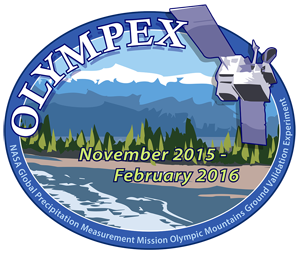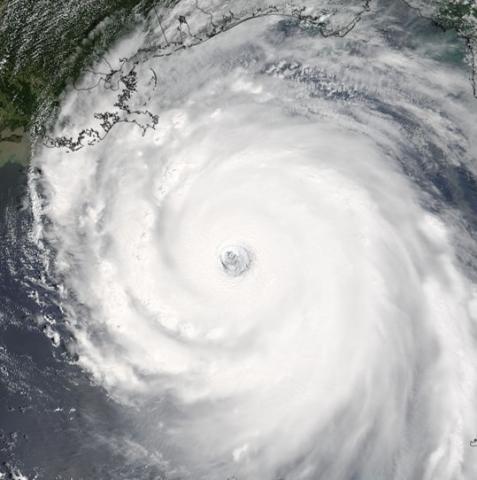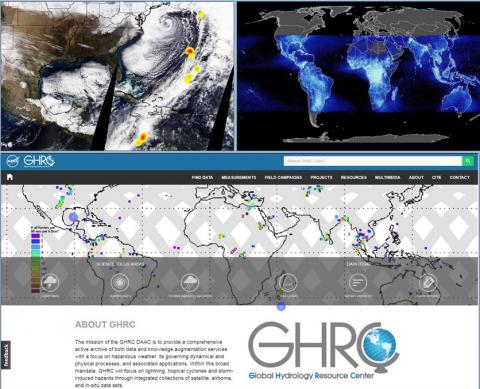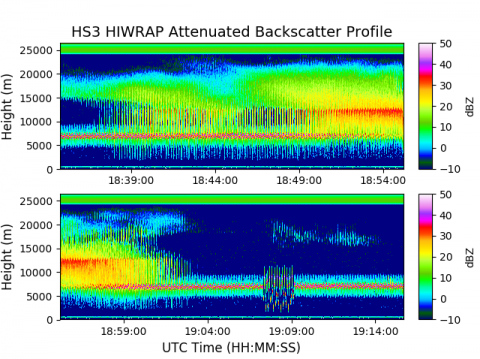 The GHRC published the GPM Ground Validation CAX1 Radar CFradial format OLYMPEX dataset (http://dx.doi.org/10.5067/GPMGV/OLYMPEX/XBAND/DATA301). This dataset consists of radar parameters, such as Radar reflectivity, Doppler velocity, Doppler width, Differential reflectivity, and Signal quality index, provided on a 0.4 to 1.0 km spatial resolution within the OLYMPEX field campaign study region in the state of Washington. These data were obtained for the GPM Ground Validation OLYMPEX field campaign by the dual polarization X-band “CAX1” portable scanning radar. The CAX1 radar was located at the southern tip of Vancouver Island on the Canadian Forces Base (CFB) Esquimalt Albert Head (AHD) military training area. The CAX1 radar was operated by Environment and Climate Change Canada to support the OLYMPEX field campaign. These data are available in Cfradial netCDF-4 format from November 14, 2015 through April 1, 2016.
The GHRC published the GPM Ground Validation CAX1 Radar CFradial format OLYMPEX dataset (http://dx.doi.org/10.5067/GPMGV/OLYMPEX/XBAND/DATA301). This dataset consists of radar parameters, such as Radar reflectivity, Doppler velocity, Doppler width, Differential reflectivity, and Signal quality index, provided on a 0.4 to 1.0 km spatial resolution within the OLYMPEX field campaign study region in the state of Washington. These data were obtained for the GPM Ground Validation OLYMPEX field campaign by the dual polarization X-band “CAX1” portable scanning radar. The CAX1 radar was located at the southern tip of Vancouver Island on the Canadian Forces Base (CFB) Esquimalt Albert Head (AHD) military training area. The CAX1 radar was operated by Environment and Climate Change Canada to support the OLYMPEX field campaign. These data are available in Cfradial netCDF-4 format from November 14, 2015 through April 1, 2016.
GHRC News

The GHRC published its third phenomenon micro article on hurricanes, addressing one of the DAAC’s key science focus areas. This micro article introduces users to what hurricanes are, how they form, where they occur, how they are observed by instruments and what NASA project data at GHRC captures hurricane events. In addition, GHRC UWG member Dr. Jonathan Zawislak from Florida International University served as a content reviewer for this micro article. The hurricane micro article may be accessed here: https://ghrc.nsstc.nasa.gov/home/micro-articles/hurricane
Image Source: LANCE Terra/MODIS True Color Image of Hurricane Katrina on August 28, 2005

The GHRC DAAC’s Leigh Sinclair conducted a webinar titled “Striking New Spatial Bounds Using ISS LIS Data” on March 7, 2018. This webinar provided an overview of the ISS LIS Near Real-Time and Science Data, which allows for the study of lightning in hazardous weather over much of the Earth, highlighted ISS LIS lightning observations during the 2017 Atlantic Hurricane Season, and included a short demonstration on how these new ISS LIS data products can be plotted using Python. Dr. Michael Peterson, a Post-Doctoral Associate with the Earth System Science Interdisciplinary Center (ESSC) at the University of Maryland, also participated in this webinar describing how he uses these ISS LIS data. This webinar was recorded and can be found here: https://youtu.be/m83cNoaMXUw

The GHRC published the GPM Ground Validation National Mosaic and Multi-Sensor QPE (NMQ) System IPHEx dataset (http://dx.doi.org/10.5067/GPMGV/IPHEX/NMQ/DATA101). This dataset consists of six different data products: precipitation rate, hourly rainfall accumulation, daily rainfall accumulation, hybrid scan reflectivity, three-dimensional reflectivity, and vertically integrated liquid content estimates. These data products were created using the NOAA NMQ System which ingests Weather Surveillance Radar 88 Doppler (WSR-88D) radar data, Rapid Update Cycle (RUC) model analysis fields, and Hydrometeorological Automated Data Systems (HADS) gauge data. The files provided in this dataset are from system output during the GPM Integrated Precipitation and Hydrology Experiment (IPHEx) field campaign that occurred in the Southern Appalachians, spanning into the Piedmont and Coastal Plain regions of North Carolina. These data are available in ASCII and netCDF-4 formats for dates between April 30, 2014 through June 16, 2014.

The Global Hydrology Resource Center Distributed Active Archive Center (GHRC DAAC) published a Python-based data recipe enabling users to generate vertical time-height plots of radar reflectivity measured by the High-Altitude Imaging Wind and Rain Airborne Profiler (HIWRAP) instrument during the Hurricane and Severe Storm Sentinel (HS3) airborne field campaign. The data recipe and associated code on the GHRC GitLab may be accessed here: https://ghrc.nsstc.nasa.gov/home/data-recipes/hs3-hiwrap-radar-reflectivity-profile-quick-view.






